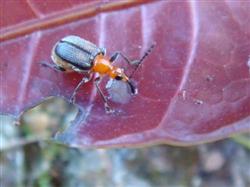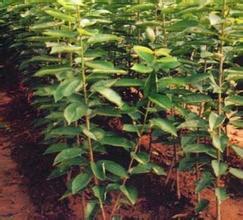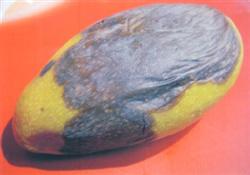Control methods of mango weevil

1. Mango leaf-cut weevil is widely distributed, adults feed on mango tender leaves, causing the leaves to dry up, or females lay eggs on the tender leaves and bite off the tender leaves from the base, affecting plant growth. Control methods: during the tender shoot growth period, ① picked up the fallen leaves that were bitten off every 3 days, dried and burned, and killed the larvae; ② sprayed once every 7 days during the tender shoot growth period, using 1500 times of 40% dimethoate EC, 1000 times of 90% trichlorfon, 500 times of 2.5% dimethoate and 2.5% of enemy killing 2004000 times. two。 Fruit mango weevil and pulp mango weevil the former is a small beetle, about 7 mm long, black. The larvae eat mango seeds and affect the fruit quality; the flesh mango weevil is a small yellowish-brown beetle smaller than the fruit mango weevil, whose larvae eat the flesh, form tunnels and are filled with insect dung, making the fruit inedible. These two kinds of insects mainly occur in Yunnan, Vietnam, Cambodia and Indonesia and belong to quarantine objects. However, it is reported that this insect has been found in the border area between Guangxi and Yunnan in recent years. As the damage of these two kinds of insects is serious, but they only occur in local areas, quarantine must be strengthened to prevent them from expanding to the new area. In recent years, it is dangerous to import mangoes from Vietnam in large quantities without quarantine. Control methods: ① strictly quarantine system in areas where the pest has not been found, strictly prevent expansion in new areas; ② does a good job in orchard hygiene in pest-infested areas, pick up fallen fruits in time, and concentrate on poisoning; ③ autumn and winter combined with clear garden weeds, fine ploughing, removal of overwintering pests in soil cracks During the young fruit stage of 30-45 days after flowering, ④ sprayed the crown with the mixture of dimethoate, trichlorfon and water 1-1-1-5, once every 7-10 days, for 3 times in a row.
- Prev

Cultivation methods of dwarfing cherry seedlings
The cherry trees are too tall to grow in the greenhouse; it takes 5 to 6 years for natural production to bear fruit and 10 years later to enter the high yield period. The investment return period is long and the management cost is high. After years of exploration, fruit tree experts in China have studied the grafting of big cherry varieties with hairy cherry as rootstock and FL-80 plum as interstock.
- Next

Occurrence and control of mango anthracnose
The main results are as follows: 1. the main damage symptoms are mango flowers, fruits and tender shoots. After the young leaves were infected, there were many round brown spots with yellow halo around them, and gradually expanded into round, polygonal or irregular brown spots, and then ruptured and perforated. The leaves and young fruits were easily infected by wounds caused by gall midges, leafhoppers and so on. Seriously susceptible to illness.
Related
- Moge, come on! The staff of the peasant association in the producing area of cantaloupe were frightened when the crowd gathered.
- Causes and Solutions of low Fruit setting rate of Apple
- Symptoms and control measures of passion fruit virus disease
- Fruit growing lesson: how do apple orchards keep high yields?
- Can you build orchards in the mountains? What are the pros and cons?
- How to manage the coloring period of Crisson grape?
- This paper introduces the processing technology of two kinds of fig products.
- How much is a month for retired teachers in rural areas by 2020?
- How can strawberry planting increase sugar content? We should pay attention to management in many aspects.
- What are the cultivation techniques on how to improve the yield of golden fruit?

